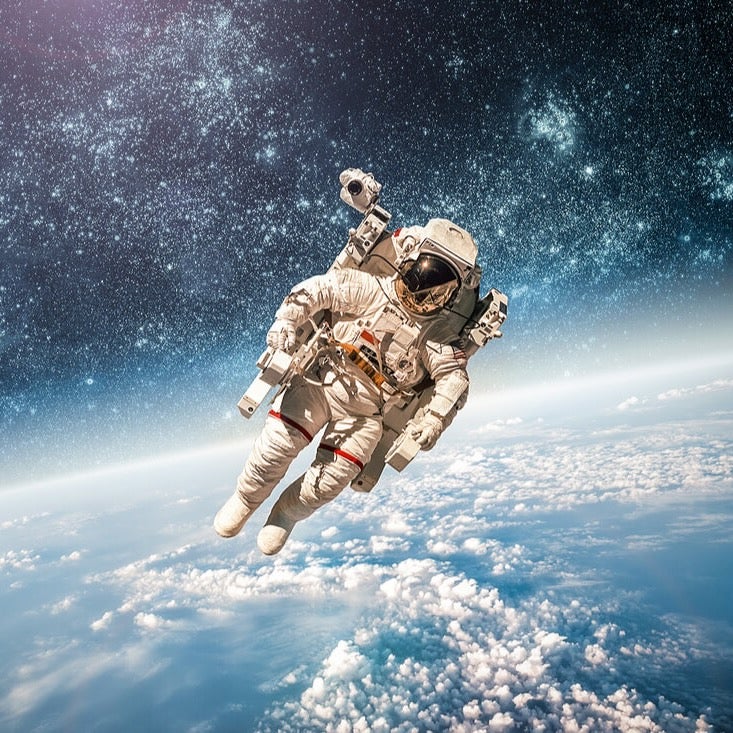Share
Computing
The Next Big Quantum Computer Has ArrivedIsabelle Bousquette | The Wall Street Journal ($)
“Helios contains 98 physical qubits, and from those can deliver 48 logical error-corrected qubits. This 2:1 ratio is unique and impressive, said Prineha Narang, professor of physical sciences and electrical and computer engineering at UCLA, and partner at venture-capital firm DCVC. Other companies require anything from dozens to hundreds of physical qubits to create one logical qubit.”
Artificial Intelligence
[In a First, AI Models Analyze Language as Well as a Human E…
Share
Computing
The Next Big Quantum Computer Has ArrivedIsabelle Bousquette | The Wall Street Journal ($)
“Helios contains 98 physical qubits, and from those can deliver 48 logical error-corrected qubits. This 2:1 ratio is unique and impressive, said Prineha Narang, professor of physical sciences and electrical and computer engineering at UCLA, and partner at venture-capital firm DCVC. Other companies require anything from dozens to hundreds of physical qubits to create one logical qubit.”
Artificial Intelligence
In a First, AI Models Analyze Language as Well as a Human ExpertSteve Nadis | Quanta
“While most of the LLMs failed to parse linguistic rules in the way that humans are able to, one had impressive abilities that greatly exceeded expectations. It was able to analyze language in much the same way a graduate student in linguistics would—diagramming sentences, resolving multiple ambiguous meanings, and making use of complicated linguistic features such as recursion.”
Computing
Wireless, Laser-Shooting Brain Implant Fits on a Grain of SaltMalcolm Azania | New Atlas
“Along with their international partners, researchers at Cornell University have developed a micro-neural implant so tiny it could dance on the head of a pin, and so astonishingly well-engineered that after implantation in a mouse, it can wirelessly transmit data about brain function for more than a year under its own power.”
Computing
Quantum Computing Jolted by DARPA Decision on Most Viable CompaniesAdam Bluestein | Fast Company
“For a technology that could produce world-changing feats but remains far from maturity—and into which billions of investment dollars have been flowing in recent months—the QBI validation is profound. The QBI’s first judgments, announced yesterday, reconfigure the competitive landscape, bolstering some powerful incumbents and boosting lesser-known players and outlier approaches. They also delivered a formidable gut punch to a couple of industry pioneers.”
Future
Our First Terraforming Goal Should Be the Moon, Not MarsEthan Siegel | Big Think
“The only way to prepare a world for human inhabitants is to make the environment more Earth-like: terraforming. While most of humanity’s space dreams have focused on Mars, a better candidate may be even closer: the moon. Its proximity to Earth, composition, and many other factors make it very appealing. Mars should be a dream, but not our only one.”
Biotechnology
This Genetically Engineered Fungus Could Help Fix Your Mosquito ProblemJason P. Dinh | The New York Times ($)
“Researchers reported last week in the journal Nature Microbiology that Metarhizium—a fungus already used to control pests—can be genetically engineered to produce so much of a sweet-smelling substance that it is virtually irresistible to mosquitoes. When they laced traps with those fungi, 90 percent to 100 percent of mosquitoes were killed in lab experiments.”
Science
10,000 Generations of Hominins Used the Same Stone Tools to Weather a Changing WorldKiona N. Smith | Ars Technica
“The oldest tools at the site date back to 2.75 million years ago. According to a recent study, the finds suggest that for hundreds of millennia, ancient hominins relied on the same stone tool technology as an anchor while the world changed around them.”
Be Part of the Future
Sign up to receive top stories about groundbreaking technologies and visionary thinkers from SingularityHub.
100% Free. No Spam. Unsubscribe any time.


Future
The First New Subsea Habitat in 40 Years Is About to LaunchMark Harris | MIT Technology Review ($)
“Once it is sealed and moved to its permanent home beneath the waves of the Florida Keys National Marine Sanctuary early next year, Vanguard will be the world’s first new subsea habitat in nearly four decades. Teams of four scientists will live and work on the seabed for a week at a time, entering and leaving the habitat as scuba divers.”
Robotics
Waymo’s Robotaxis Are Coming to Three New CitiesAndrew J. Hawkins | The Verge
“Waymo said it plans on launching commercial robotaxi services in three new cities: San Diego, Las Vegas, and Detroit. The announcement comes after the company said it would begin rapidly scaling to bring its fully driverless technology to more people on a faster timeline.”
Artificial Intelligence
AI Capabilities May Be Overhyped on Bogus Benchmarks, Study FindsAJ Dellinger | Gizmodo
“You know all of those reports about artificial intelligence models successfully passing the bar or achieving PhD-level intelligence? Looks like we should start taking those degrees back. A new study from researchers at the Oxford Internet Institute suggests that most of the popular benchmarking tools that are used to test AI performance are often unreliable and misleading.”
Computing
Unesco Adopts Global Standards on ‘Wild West’ Field of NeurotechnologyAisha Down | The Guardian
“The standards define a new category of data, ‘neural data,’ and suggest guidelines governing its protection. A list of more than 100 recommendations ranges from rights-based concerns to addressing scenarios that are—at least for now—science fiction, such as companies using neurotechnology to subliminally market to people during their dreams.”

SingularityHub chronicles the technological frontier with coverage of the breakthroughs, players, and issues shaping the future.